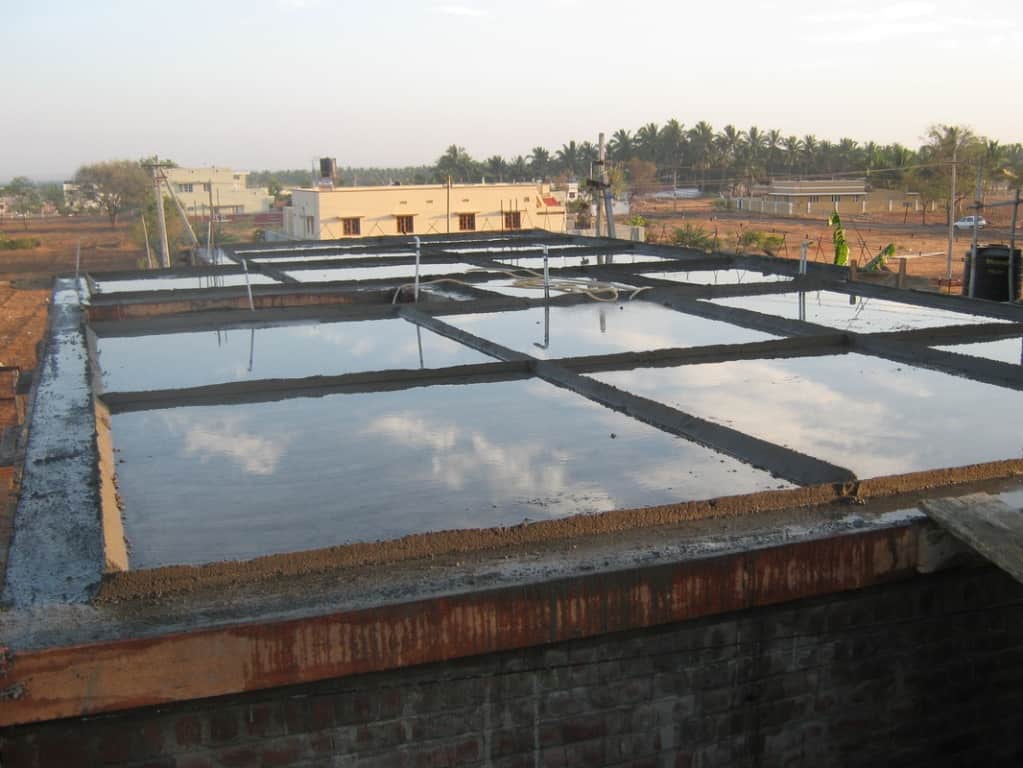Curing of concrete involves keeping the concrete moist and protects against loss of moisture required for hydration cement. Curing concrete after the casting the concrete is very important. Ponding method is one of the very well-known and widely adopted methods in concrete curing. Ponding method is possible only on horizontal or flat surfaces of the structure (i.e. curing concrete slab) where water could be easily retained on top of the concrete structure after it has been cast. You cannot cure sloping roof or column, walls with this method. However, for the slab, this is most suitable.
In ponding method, small rectangular or square artificial ponds are built with using bunds of clay or lean mortar or sand across and along the concrete surface. Water is filled in small rectangular or square ponds two or three times per day depending upon the atmospheric conditions. This method is very efficient but the more amount of water required is huge. Further, ponds can easily break and water may flow out resulting in loss of curing and water both.
Concrete Curing Precautions

Courtesy - cegyan
It is a probably better than other concrete curing methods but also the hardest to perform correctly. Hence, following precautions are necessary:
- Water should be continuously replenished to avoid dryness because ponded water gets lost due to evaporation.
- All the corners and edges of the entire surface should be covered by ponding water uniformly to avoid dry spot, i.e. the last point also needs to be covered without fail.
- Water used for curing should have identical properties as that of water used for the manufacture of concrete, i.e. it should be potable water.
- Water and materials used for bunding should be free of substances that will stain or discolour the concrete surface.
- The difference in the curing water temperature and ambient temperature should not be more that 11°C to prevent thermal stresses that could result in cracking.
- Sufficient amount of water should be available at the site throughout the curing period of 7 to 14 days.
- Bunds of impervious clay or cement mortar to retain water should be maintained throughout the curing period and should not get disturbed due to movement of worker managing it.
- The height of the bunds and area of the concrete surface which is to be ponded must be selected in such a way that there is at least about 25 mm of water ponded on the highest surface.
